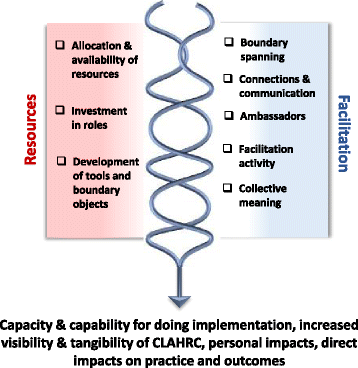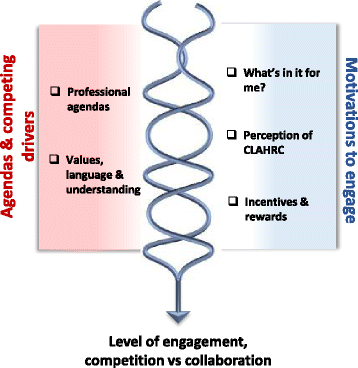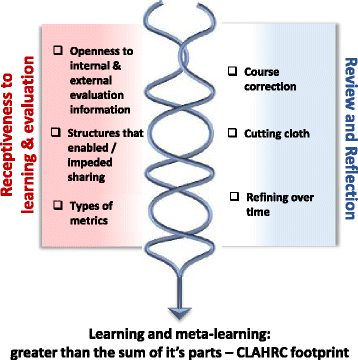Collective action for implementation: a realist evaluation of organisational collaboration in healthcare
- PMID: 26860631
- PMCID: PMC4748518
- DOI: 10.1186/s13012-016-0380-z
Collective action for implementation: a realist evaluation of organisational collaboration in healthcare
Abstract
Background: Increasingly, it is being suggested that translational gaps might be eradicated or narrowed by bringing research users and producers closer together, a theory that is largely untested. This paper reports a national study to fill a gap in the evidence about the conditions, processes and outcomes related to collaboration and implementation.
Methods: A longitudinal realist evaluation using multiple qualitative methods case studies was conducted with three Collaborations for Leadership in Applied Health Research in Care (England). Data were collected over four rounds of theory development, refinement and testing. Over 200 participants were involved in semi-structured interviews, non-participant observations of events and meetings, and stakeholder engagement. A combined inductive and deductive data analysis process was focused on proposition refinement and testing iteratively over data collection rounds.
Results: The quality of existing relationships between higher education and local health service, and views about whether implementation was a collaborative act, created a path dependency. Where implementation was perceived to be removed from service and there was a lack of organisational connections, this resulted in a focus on knowledge production and transfer, rather than co-production. The collaborations' architectures were counterproductive because they did not facilitate connectivity and had emphasised professional and epistemic boundaries. More distributed leadership was associated with greater potential for engagement. The creation of boundary spanning roles was the most visible investment in implementation, and credible individuals in these roles resulted in cross-boundary work, in facilitation and in direct impacts. The academic-practice divide played out strongly as a context for motivation to engage, in that 'what's in it for me' resulted in variable levels of engagement along a co-operation-collaboration continuum. Learning within and across collaborations was patchy depending on attention to evaluation.
Conclusions: These collaborations did not emerge from a vacuum, and they needed time to learn and develop. Their life cycle started with their position on collaboration, knowledge and implementation. More impactful attempts at collective action in implementation might be determined by the deliberate alignment of a number of features, including foundational relationships, vision, values, structures and processes and views about the nature of the collaboration and implementation.
Figures
References
Publication types
MeSH terms
Grants and funding
LinkOut - more resources
Full Text Sources
Other Literature Sources
Medical
Miscellaneous








